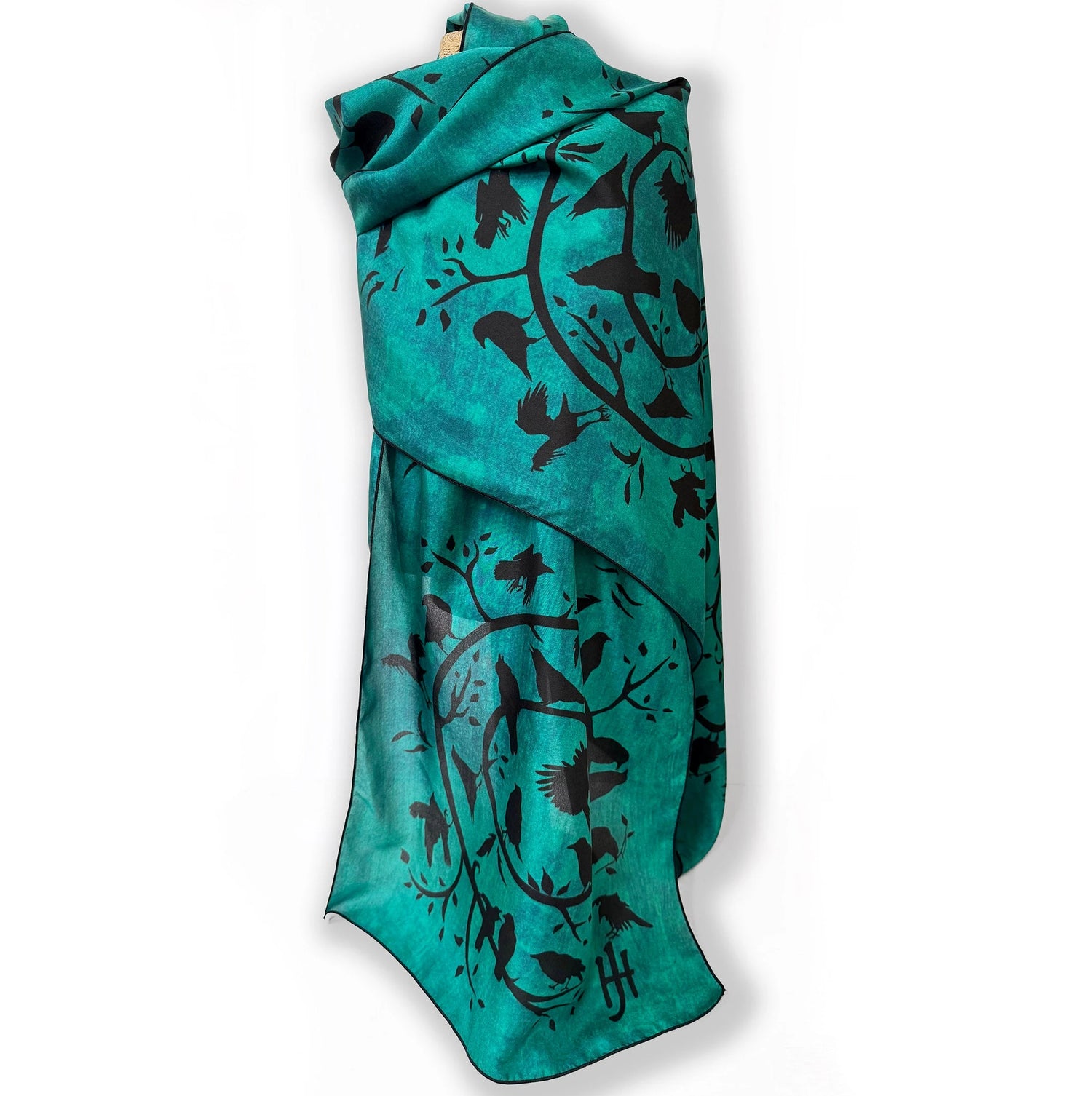Crowpocalypse 2015
The summer of 2015 had been a rough one for crows. Actually it’s been tough for urban wildlife of all kinds, but since I watch the crows so much, I’ve been feeling their pain especially.

Crow silhouette against the eery red sunrise caused by smoke from forest fires in areas around Vancouver.
Raising fledglings is hard work at the best of times – constant feeding, along with perpetual vigilance against the usual dangers – racoons, hawks, eagles, cars, cats etc. Added to the usual list of challenges this summer: high winds (just when babies were emerging from the nest), heat and drought, served with a garnish of forest fire smoke.
Tired crow parents, made fierce by anxiety, are prone to dive bombing unwary human pedestrians every nesting season. It seemed to me that they were even more ferocious than usual this year.
Who could blame them?
It was too hot for me to venture out at all after noon on days when the temperatures soared this summer. Pity the poor crow parent – obliged to fly about relentlessly, heat or no heat, seeking tasty morsels food satisfy their perpetually hungry, pink-mouthed babies.
Even worse than the heat — drought. Until the fledglings learn to fly a longer distance, I don’t know how the parents keep them hydrated.
Eric and his family (for reasons I will go into) have been avoiding my garden and the bird bath there. Worried for them, I’ve been making early morning trips to their “territory” at the end of out street with a saucer of water and a few nuts.
All of the crows, even Eric the Elegant, are looking terribly bedraggled this summer. They began their moult in early July. This is a normal occurrence, but usually happens at the end of the summer. I can only imagine that the scorching temperatures must have brought it forward. The ground is littered with black feathers.
Earlier this year I read the wonderful book, Corvus, by Esther Woolfson. From her writing, I learned that the moulting process makes birds rather irritable and out of sorts.
In the garden in early summer we had Hank and Vera. After weeks of diligent nest construction and guarding, they lost their eggs to a hungry racoon. They remained for a while and then moved on. Here they are during the period in July when Vancouver’s air quality was affected by forest fires in surrounding areas – looking rather sepia in the smokey atmosphere.
When Hank and Vera left, I thought Eric and his family would return to the garden. Instead, I found that they would come to my front gate, looking for handouts, but would never, ever venture into the back garden. Eric’s fledglings even adopted a “silent” begging mode, going through all of the usual baby crow pleading motions, but without sound. Its almost as if they didn’t want to attract the attention of other crows.
Meanwhile, Hank and Vera had been replaced in the back garden by another crow family – two devoted parents with a very homely looking fledgling. The baby crow had various lumps under his beak, and eventually on his feet too. Luckily, a sharp eyed visitor to my Facebook page, where I’d posted a photo of the new baby, pointed out that it could be a case of avian pox.
I checked the symptoms with the wonderful people at Wildlife Rescue Association BC and they confirmed that this was likely the case. Avian pox is highly contagious among many bird species, harmless to humans.
I always keep my birdbath and feeders clean, but on hearing this news I’ve started cleaning the birdbath in particular with bleach twice a day. I don’t normally like using bleach, but apparently only a 10% solution of bleach to water is effective against the virus. You can read more about this illness in Corvid Research’s wonderful blog, here.
My theory is that Eric and his family know that there is a sick crow around, and that is why they haven’t returned to their old stomping grounds. I am heartened to think that this is yet another example of crow intelligence.
Eric and his mate, Clara, started out with four fledglings. It’s to their credit that they have, so far, managed to nurse two of them through a very rough summer.
One of Eric’s two youngsters – already looking like a chip off the old block, and wonderfully healthy, thank goodness.
If you like crows in general and Eric in particular, you can follow my Facebook page for regular updates. Also, stay tuned to my website for news of a 2016 City Crow calendar, featuring the adventures of Eric and his family.
































